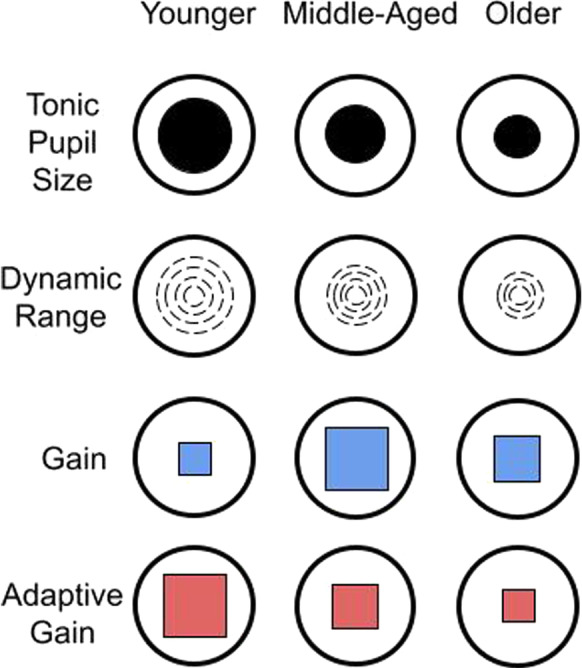Fig. 4.

Summary figure illustrating age-related changes in pupillary orienting. Tonic (baseline) pupil size and dynamic range of pupillary orienting response both decrease across the lifespan. A nonlinear change in pupillary response gain compensates for this loss in middle aged adults, until gain is no longer sustainable in older age, resulting in diminished adaptive gain to behaviorally relevant stimulus events. Dynamic range is the 98% range of pupillary size fluctuation across the experimental session. Gain (blue squares) is the proportion of dynamic range used for target responding. Adaptive gain (red squares) is the ratio between behaviorally relevant target and behaviorally irrelevant distractor pupillary responses, which decreases in middle aged adults and decreases further in older adults
